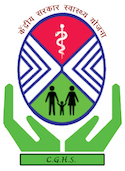Premenopausal syndrome is a group of symptoms that can occur anytime between the onset of puberty and the late 40’s or early 50’s, when menstrual periods first begin. Although premenopause (the transition period in which estrogen production declines) typically occurs in women aged 45 to 55 years old, it is estimated that as many as 10% of women may experience symptoms associated with premenopause before age 35. Premenopausal syndrome, like menopause itself, occurs due to fluctuating hormonal levels.
What are symptoms of Perimenopause?
Varying degrees of hot flashes/night sweats (feeling warm and sweaty). Hot flashes often cause generalized sweating and rapid heartbeat for short periods of time. These episodes typically last 5 to 10 minutes and can be a distressing experience for some women. Night sweats occur on awakening from sleep or after bed rest and may last 5 to 15 minutes.
Irregular, skipped or heavy periods (as well as heavier menstrual flow). Some women may not have any change in their usual menstrual pattern but there is both an increase in blood volume and changes in coagulation factors. Bleeding problems are most likely to occur during the first year of symptoms or if periods were previously light or absent altogether. After this initial year, bleeding becomes more regular with only 20% of premenopausal women reporting irregular periods at that time. The longer a woman experiences inter-menstrual bleeding, the more her body will establish itself into the new pattern.
Emotional symptoms such as anxiety, depression, sleep disruptions, irritability and fatigue. These are the most commonly reported premenopausal symptoms. They may be related to the fluctuation in estrogen and progesterone levels or they may result from other changes that occur during this time. As a result of emotional symptoms, these women are at increased risk for heart disease, high blood pressure, obesity and diabetes mellitus. To cope with these concerns and maintain their health into menopause many women turn to hormone replacement therapy (HRT). HRT is not without risks however. HRT increases your chances of developing uterine cancer, stroke and heart attack. If you would like to avoid these risks then natural supplements may be a better option for you.
How do I know the cause?
There are many reasons why women exhibit symptoms associated with premenopause (premenopausal syndrome). One reason is what is known as perimenopause or menopause transition. Perimenopause typically occurs from age 40 to 50 years but can begin between age 35 and 40. However, it is estimated that 10% of all women will experience premenopausal symptoms before the age of 35! Estrogen levels drop at this time in life sometimes resulting in irregular periods, hot flashes, night sweats, discharge, vaginal dryness, sleep disruption and mood changes! There are several reasons why these symptoms occur.
As we age the ovaries gradually decline in their ability to secrete estrogen. The result is that estrogen levels drop. Also, progesterone (the second female sex hormone) levels tend to decrease as well resulting eventually in a situation where estrogen levels become too low for the body to maintain normal function of reproductive tissues such as a healthy uterus and cervix (after menopause). Thus hot flashes, night sweats, irregular menstrual periods and vaginal discharge can be explained both by declining estrogen secretions over time, but also because estrogen production drops abruptly at menopause exceeding the ability of other hormones such as progesterone to compensate. In fact, if you are experiencing hot flashes or night sweats regularly and your periods are no longer regular then perhaps this is a possible indication that you have entered perimenopause.
What does Ayurveda talk about Premenopausal syndrome?
“There are some women who have irregular periods and some women do not menstruate at all. They have no bleeding at any time of their life, still they become pregnant and deliver normal children.” – Charak Samhita
Ayurveda talks about the changes that a woman undergoes during premenopause in terms of her doshas. The three doshas (vata, pitta & kapha) manifest differently in various conditions including typical versus menstrual irregularities. For example, Kapha people may experience heavy / excess flow especially if there is insufficient exercise or sweating to remove this excess Kapha accumulation or imbalance from their body. Pitta individuals on the other hand may experience excessive night sweats accompanied by hot flashes and may even develop acne, menstrual cramps, mood or anxiety issues because of increased Pitta. Vata-dominant people experience irregular periods often alternating between light and heavy flow (because vata is mobile).
How can I transition into this time in my life naturally?
Ayurvedic physicians are trained to recognize the signs that a woman is transitioning toward menopause so that an appropriate course of treatment can be initiated before she experiences perimenopausal symptoms. If you have not seen an Ayurvedic physician yet then do not fret! You will want to begin experiencing these preliminary stages as early as your 35th year to ensure you are able to maximize your reproductive years while minimizing any possible side effects such as excessive bleeding, uterine fibroids, ovarian cysts or cancer. An Ayurvedic physician will help you to do this by recommending herbal supplements and dietary changes that will support your overall health and fertility!
What is Ayurveda treatment for perimenopause?
As mentioned above, Ayurvedic physicians are trained to recognize the signs that a woman is transitioning toward menopause. Based on these signs an appropriate course of treatment can be initiated before she enters perimenopause or menopause (as it is called in Ayurveda).
However, there are certain things that you as the patient can do as well to help alleviate some of your symptoms even if you are not seeing an Ayurvedic physician yet.
In general, herbs and dietary changes will play a very important role in helping you through these transitional years! In fact, I have found that if I follow certain diet and lifestyle recommendations then my menstrual cycle remains more balanced than when I deviate from them!
The most important changes to make in your diet
Women with irregular periods and no periods at all often lack agni (your body’s digestive fire). When the digestive fire is weak then it has a harder time extracting nutrition from foods. This causes the system to be more Kapha dominant making you prone to cravings for sweets/carbohydrates, weight gain and excess mucus production resulting in issues such as acne, heaviness in the pelvis after meals, feeling tired or lethargic instead of energized after eating etc.
Recommendations for healthy perimenopause:
See an Ayurvedic Physician early! If you haven’t already done so then make yourself a top priority. Visit an Ayurvedic Physician once every year starting at age 35 to monitor your progress.
Diet – follow our general recommendations for supporting female reproductive health which includes eating smaller meals more frequently on a daily basis instead of one or two larger meals at night. You would benefit from avoiding foods that cause Kapha accumulation such as heavyarchy foods (i.e., wheat, beans, dairy products) and heavy cooked foods which can cause excess Pitta. As a patient you would want to eat more of the lighter pitta-reducing food choices such as salad greens, steamed veggies and fruits in season.
You may also benefit from 1-2 glasses of a freshly prepared Amalaki or Shatavari purée daily for 8 weeks starting at least 2 months prior to menopause onset. These two herbs are known as “female tonics” because they support healthy estrogen metabolism while nourishing reproductive tissues and balancing uterus health (a vital key to avoiding uterine fibroids). This type of herbal preparation can also enhance fertility by improving ovulation function and endocrine system balance and support. It’s best to reduce your intake of these tonics gradually when you have completed the suggested course of 8 weeks so as not to cause an imbalance and/or detox reaction.













